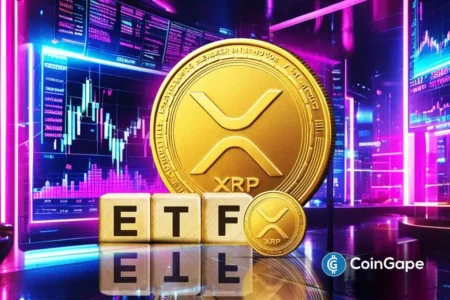Ethereum (ETH) Weekly Analysis: Navigating Market Challenges
Ethereum (ETH) has recently experienced a notable decline of approximately 12% over the past week. Despite a brief resurgence to the $3,400 mark, market analysts suggest a more turbulent path ahead. The coin may be influenced by strong liquidity clusters located between $3,200 and $3,350, making it likely to revisit that range before initiating any potential rally towards the $3,500 target. As we delve deeper into the current landscape, several pressing factors impact Ethereum’s trajectory, revealing insights for investors and stakeholders.
Economic Pressures and Market Sentiment
The current economic landscape is undeniably challenging for Ethereum and the broader cryptocurrency market. Weak global economic indicators and a rising risk-off sentiment are putting pressure on digital assets. Disappointing quarterly results from consumer-oriented companies and heightened concerns surrounding lofty valuations in the artificial intelligence sector compound the situation. Furthermore, the ongoing U.S. government shutdown has exacerbated investor anxiety, with a recent University of Michigan survey indicating that consumer sentiment expectations have fallen to their lowest level since 1978. This backdrop creates a complex environment for Ethereum, where market sentiment can sway prices significantly.
On-Chain Activity and Ecosystem Health
Ethereum’s on-chain metrics reflect a cooling ecosystem, as evidenced by the total value locked (TVL) on the network. Recent data reveal a drop to approximately $74.256 billion, marking a 24% decline over the past month—levels that haven’t been seen since July. This downturn has been catalyzed by significant incidents, including an attack on Balancer v2, a prominent DeFi platform that suffered a staggering $120 million loss. Trading activity has also taken a cautious turn, with volumes sliding 31.6% to around $65.3 billion, and open interest dropping by 3.4% to approximately $38.85 billion. ETH’s OI-weighted funding rate remains at a low 0.0073%, indicating limited bullish sentiment among traders.
Diminished Demand for Ethereum ETFs
Compounding Ethereum’s struggles is the subdued demand for spot exchange-traded funds (ETFs). U.S.-listed ETH spot products experienced net outflows of approximately $507.83 million in November, highlighting a significant lack of institutional interest. The data suggests that major corporate treasuries are not increasing their Ethereum holdings, indicating that institutional appetite may be weakening. The derivatives market also reflects this downturn, with macroeconomic headwinds looming over Bitcoin’s performance and the cryptocurrency market at large. With the prospect of rallying towards $3,900 appearing limited, investors remain on high alert.
Upcoming Catalysts: The Fusaka Upgrade
Amid these pressures, there is a potential positive catalyst on the horizon—the Fusaka Upgrade scheduled for early December. This upgrade aims to bring crucial scalability and security improvements to the Ethereum network, which could enhance overall performance and appeal. However, for a bullish trend to take hold, several conditions must align. Improvements in macroeconomic stability, increased interest from ETF providers, and signs of robust on-chain growth are essential. Absent these factors, Ethereum may continue to consolidate or slide towards lower support levels.
Current Market Dynamics and Future Outlook
Ethereum’s recent downturn is not merely a reaction to external market noise; rather, it is substantiated by tangible weaknesses in ecosystem metrics and investor flows. The well-defined liquidity cluster around the $3,200–$3,350 zone plays a crucial role in providing support, while the $3,500 price point remains a potential upside goal. Yet, investors must remain cautious as the environment continues to present a series of headwinds, including global economic uncertainty and waning network activity. Low institutional appetite further provides a challenge for fostering broader market participation and investor confidence.
Conclusion: A Cautious Path Ahead
In sum, Ethereum’s trajectory faces significant hurdles as it grapples with a challenging economic backdrop and diminished on-chain activity. While liquidity clusters provide a foundation for potential support, the broader market’s volatility and institutional hesitance may weigh heavily on its future performance. For Ethereum to break free from its current stagnation, it must see a convergence of improved external conditions, renewed institutional interest, and solid network activity. Investors should stay vigilant, monitoring these dynamics closely as they navigate a complex and evolving landscape.















